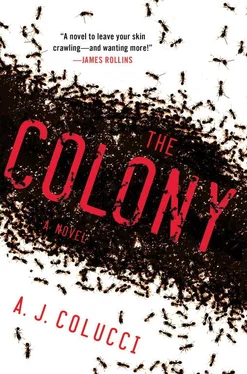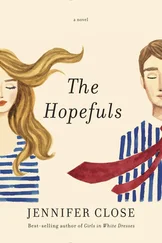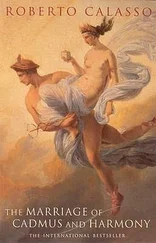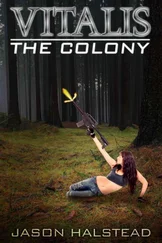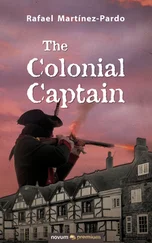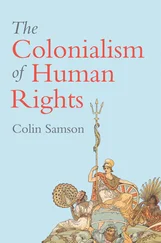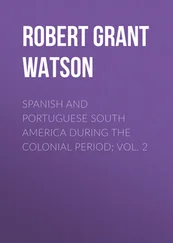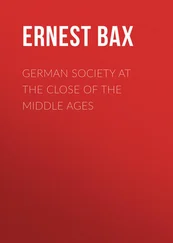The ant appeared to be a precise replica of the others. The head was unusually skull-shaped and twice as large as that of any other ant species, its copper face tilted up in a roar. The claws were enormous, and what the hell was this—a thumb? Paul used a dropper from a vial to dab the ant with nitric acid. Normally the body would dissolve; this insect showed zero reaction. He slid the ant around in the liquid with the tip of the scalpel. Not even the joints broke apart.
Impossible.
No matter how many times he examined them, dissected them and tested them, the impossible factor wasn’t going away. He rubbed his closely trimmed beard and wondered how the greatest moment of his career had so rapidly dissolved into the bleakest.
Two weeks ago, Mayor John Russo had come to the museum claiming ants had eaten a couple of New Yorkers. The insects delivered to Paul’s office resembled no ant species ever discovered. They were enormous and had no recognizable DNA. Their morphology wasn’t linked to any genus of Hymenoptera. The ants acted viciously in the field, yet were docile in the hand. They displayed abnormal behavior and died within hours.
Then colonies of ants started popping up all over the city, seemingly overnight.
For any entomologist, it was a dream come true.
Paul believed he was the perfect scientist for the job. Known throughout the bug world as Professor Ant, he had just come off a lecture series for his controversial book, Insect Altruism: How an Ant Colony Can Save the Human Race. For that he’d been awarded a Pulitzer Prize and the National Medal of Science, and there was talk of a Nobel. He’d hosted multiple nature specials on PBS, BBC and Discovery and been quoted in National Geographic no fewer than twenty times.
Paul’s studies were based on the social aspect of ants. Their ability to survive since 50 million years before the dinosaurs was due to congenital cooperation, not the pursuit of individual needs. Ants performed tasks solely for the benefit of the colony, never for themselves. They possessed an incredible sense of duty; all worker ants had two stomachs, one for themselves and one to feed the rest of the colony. Certain worker ants might be in charge of cleaning out the tunnels, but if they noticed food stacking up at the entrance of an anthill, they would switch tasks and begin food storage. It was called collective decision making.
Paul compared the sociology of ants to certain altruistic human societies, like the Aborigines in Australia, the Siberian Inuit, the bushmen of Africa, monks of Tibet and Buddhists in Malaysia. Based on his study of Hymenoptera, Paul had developed a theory: societies that act in cooperation survive, whereas those motivated by personal gain will eventually become extinct.
There wasn’t a scientist on earth who possessed his knowledge or experience in the taxonomy of ants. But Paul had to admit, for the first time in his life, he was stumped. He flung the contaminated specimen and dissecting tools into a utility sink, went back to his desk and collapsed in the leather chair. He leaned forward and rubbed his bloodshot eyes, then gazed around the room. On the walls were photos of Paul with Jane Goodall in Africa, David Attenborough in Madagascar and Edward O. Wilson back at Harvard. Without a doubt, Paul had reached the pinnacle of his career.
That was before the mutant ants.
Paul cringed at his arrogance. Hadn’t he promised the mayor he could single-handedly contain the colony? Hadn’t he done everything possible to keep out his rivals? Now he was locked in a deadly race against time, anxiously awaiting DNA reports from universities like Cornell, Texas A&M, North Carolina State and Purdue as well as entomology institutes in England, Kenya, Japan, Germany, Australia and every other ant shop he knew. He walked back to the lab, heavy in thought.
Jason, a spirited young assistant, entered the office. He was tall, boyishly handsome, with intelligent eyes and a biting smirk on his face; a younger version of Paul. He carried a thick stack of folders in one hand and held out a cell phone with the other.
“Mayor’s office is calling me now.” He raised an accusing brow at Paul. “Turned yours off, didn’t you?”
Paul didn’t answer, but grabbed the stack from his assistant.
“Latest batch,” Jason said. “They all say the same thing.”
Paul slammed the reports on the counter.
Enough paperwork. Falling back on his early training, when all the answers could be found in the physical world, he plucked up a fresh ant specimen from a slide, held it between his fingers and sliced the thorax down the middle with a diamond-blade scalpel.
A clear bubble of liquid oozed from the exoskeleton and leaked onto Paul’s thumb. The venom set off a fierce sting and Paul reflexively dropped the ant, snapping his wrist back with a gasp of pain. He shook his hand and frantically scanned the room.
“Looking for this?” Jason nonchalantly picked up a coffee can of sodium bicarbonate.
Paul plunged his fingers into the can.
Jason laughed.
“Thanks a lot.” Paul rolled out a length of paper towel, tearing off a piece to wrap around his thumb.
“Geez, you’re bleeding.” Jason clicked his tongue several times with mock empathy. “That was truly the act of a desperate man. This won’t go over well with the Nobel folks, no sireee.”
“Perhaps you’d like to go back to assembling Eskimo dioramas.”
“I’m just saying…” The sarcasm in the room evaporated. “So what the hell are you waiting for? Go to the press.”
Paul shook his head. “Not until we figure the damn things out.”
“Is that you talking, or city hall?”
Paul felt flushed. He wasn’t sure if it was from the toxic hit he’d taken from the ant or from his assistant. A Blackberry lying on the counter rang out Beethoven’s Fifth and Paul stiffened. His thumb was still bleeding through the paper towel. He added another layer and answered the phone.
“O’Keefe.” A wave of nausea swept over Paul as he listened to the mayor’s voice on the other end. It was worse than he expected.
Jason handed him a medical bag as Paul headed out. “Another body?”
Paul shook his head. “Two.”
NEON LIGHTS SWIRLED FROM the tops of a dozen police cars, blocking off a chunk of Broadway, where the bodies of the sanitation workers lay under white sheets in the same position they were found. NYPD officers stood stoically over the crime scene while commuters pressed against the yellow tape, straining their necks to get a look.
Police Chief Scotty Harris walked away from the bodies in disgust. The medical examiner, handpicked by the mayor himself, still hadn’t arrived and Harris cursed him through gritted teeth. He yelled out to one of his men, “Sergeant! Where the hell is Wang? I got two dozen detectives, FBI, CIA and no fucking medical examiner. I want these bodies gone.”
“He’s up in Harlem,” the sergeant scowled. “Got another one. That makes what—seven?”
“Who’s counting?”
A white van topped with a satellite dish screeched up to the scene, FOX FIVE NEWS emblazoned on the side in red, white and blue. The door blew open and a willowy blonde sprang out with a cameraman in tow, ready to roll. She elbowed through the crowd to the first cop that didn’t flee from her like the plague, thrust a microphone in his face and fired off questions just as NBC News pulled up to the scene.
The rookie cop, caught in the spotlight, raised a helpless brow to the chief.
“Go tell Debrowski to keep his mouth shut,” Harris told the sergeant. “Anyone asks, it’s a regular, run-of-the-mill New York City double homicide.”
Читать дальше
